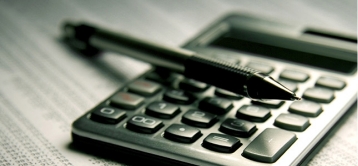Money can stress anyone out. Bills stack up, surprise repairs crop up, and that savings goal still looks like a far-off dream. The 50/30/20 rule sweeps in and says hey, let me slice your paycheck into three easy pieces, so you can breathe a little easier.
Picture this: take your paycheck after taxes—federal, state, the whole deal—and break it down by purpose instead of by dollar. Half goes to things you absolutely can’t dodge, like rent and groceries. A sliver under a third handles want-its, from streaming binges to Friday pizza. The final chunk either pads your wallet for future storms or chips away at any debt hanging around.
Anyone who has stared at a jumbled bank statement and felt lost could use a formula like this. Even veterans who leafed through spreadsheets last month might rediscover a fresher point of view once they give the rule a twirl. With just three numbers to remember, budgeting switches from a chore to a plan that actually makes sense.
The 50/30/20 Rule: A Simple Approach to Effective Budgeting
The 50/30/20 blueprint suits people who want their money map to be normal instead of NASA complicated. It carves paychecks into neat portions, clears the fog, and delivers balance on a plate. Put simply, following its shape makes the monthly math feel less like homework and more like routine.
Split your income after taxes into three straightforward chunks. The first slice covers must-have stuff—house rent or mortgage, power bills, groceries, and the gas or bus fare that gets you around—and it should weigh in at half your paycheck, or 50 percent.
The middle portion, 30 percent, is all about the nicer things you choose. Think Saturday night dinners, that streaming bundle you can quit anytime, or a quick getaway that adds fun but isn’t strictly required.
The last tidy bit, 20 percent, goes right to your future self. Plug it into a retirement fund, stash it in a rainy-day jar, or slam the balance down on a credit card; the choice is yours, but the goal is to make tomorrow’s money stronger.
One big win for the 50-30-20 formula is how uncomplicated it feels. No need for fancy apps or color-coded charts; just grab a calculator, slice the pie, and stick to the plan.
Pay attention to where your cash lands and the habit of checking keeps spending from drifting out of control. You get room for little luxuries and still play nice with long-term goals.
Life keeps moving—starting a family, jumping jobs, maybe even relocating—and the rule can flex with those twists. Bump the needs percentage up for a bigger rent bill, scale the wants down if money gets tight, but keep that savings slice in the frame so the budget doesn’t lose its balance.
What Is the 50/30/20 Rule?
If numbers make your head spin, the 50/30/20 Rule feels like a friendly hand waving you over. Think of it as a no-fuss map for where your paycheck should hitch a ride.
Needs Take Half
Because life doesn’t pause, half your paycheck—after taxes—keeps the lights on and the fridge cold. Rent, power, groceries, gas, and a quick trip to the doctor all land in that must-have column. Lose a single piece, and your normal day starts getting squishy around the edges.
Wants Claim a Third
The next slice—still looking at 30 percent—runs off to things on your wishlist: a dinner that doesn’t come with a microwave, a streaming binge, or a flight to see old friends. None of it is vital, yet skipping every bit would dull life’s flavor quickly.
Savings and Debt Share a Fifth
The final 20 percent becomes the cushion and the sword at once. It builds a rainy-day stash, powers up a retirement fund, or chips away at that student loan that still feels like a roommate. Handing this cash the right job decides who sleeps easier tonight.
Why It Clicks
No fancy charts or flashing apps required. Just three numbers to remember, a little bit of honest math, and suddenly your money stops acting like a mystery novel.
The awesome part about the 50/30/20 Rule is how it stretches to fit just about any paycheck or lifestyle. A fresh grad living on ramen and a retiree sipping coffee on a patio can both lean on this budget, and it asks them to give up almost nothing that really matters.
When you stick to those three slices month in and month out, spending becomes a lot less scary. You still enjoy today, yet you quietly build the cushion that shrinks tomorrow’s worries.
How to Use the 50/30/20 Rule
Jumping into the 50/30/20 habit really isn’t rocket science, and honestly, that’s part of its appeal. Grab your after-tax paycheck—the number that hits the bank after Uncle Sam has done his thing—and call that your starting line.
Half of that total gets boxed up for needs: rent, light bills, groceries, bus fare, and doctor visits. There’s no wiggle room here; these bills show up whether you plan them or not.
With the non-negotiables covered, carve 30 percent out for wants. This chunk pays for Friday-night takeout, streaming binges, summer road trips, and those cute sneakers that felt like a hard yes in the checkout lane.
The final slice of your paycheck—roughly 20%—should land in savings or on outstanding bills. Toss the money into an emergency fund, pad a retirement account, and knock out high-interest debt once the other two jars are full.
Staying true to the plan means peeking at your numbers every so often. A simple app or even a handwritten spreadsheet shows how your real spending matches the roadmap drawn by the 50-30-20 split.
Checking back monthly or at least every three months works for most people. Paychecks can rise or shrink, and surprise bills pop up; a quick review makes sure the budget still fits.
Percentages aren’t carved in stone. If it feels right to sock away more cash when buying a car or saving for college, nudge the numbers and carry on without guilt.
The main draw of the 50-30-20 setup is its no-fuss design. Stacking your money in easy-to-remember thirds cuts through the number overload that can sink a first-time planner.
Flexibility is another win. Are groceries creeping up? Shift a little from fun money and keep everything flowing without a detailed remake of the whole plan.
The 50/30/20 rule is like a friendly reminder to slow down before you swipe a card. It forces you to box spending into needs, wants, and savings, so the money isn’t gone before you’ve even blinked. Suddenly, your choices feel real instead of automatic, and you start picking what really matters.
Sticking to that half, almost a third, and a fifth keeps every part of life in check. Rent gets paid, takeout still happens, and the savings jar does not collect dust. That equal push against any one area stops the surprise when months lean too hard on food or fun.
Most people will tell you saving first is the grown-up move, and this plan does exactly that. Twenty cents out of every dollar heads straight to a rainy-day fund or cuts a credit-card bill, so stress about sudden costs melts away. Future-you sits a little straighter knowing cash is waiting.
Following a clear outline every month also yanks budget anxiety out by the roots. Decisions aren’t gut calls anymore; they are math that fits the rule, so panic about overdrafts fades. Even the toughest months feel more like puzzles than disasters.
Repeat the cycle, and the budget muscle builds almost on its own. Eating out less or dodging impulse buys stops feeling heroic; it becomes routine. Soon enough, loftier targets like a down payment or a calm retirement balance don’t seem so far off.
Watch out for classic traps, though. Many folks label subscriptions needs because the bill is small, guess at income instead of tracking it, or skip the numbers on slow paychecks. Spotting those mistakes early keeps the whole system from wobbling.
A lot of people stop keeping close tabs on every dollar. They skip the lattes, the bus fares, and assume those tiny amounts don’t matter. News flash: stack those pennies high and you suddenly see a hole in the budget.
Some folks cling to their percentage cuts like a life preserver. A surprise vet bill or a birthday party sneaks in, yet they refuse to shift a single category. That kind of iron can turn into a cage pretty fast.
Once in a while someone glances at the 30 percent for fun money and says, Nope, I won’t need that. Later, boredom or guilt kicks in and the whole plan feels like a diet with no dessert. Life is better when hobbies and movies get a seat at the table.
Life isn’t frozen in time, even if your spreadsheet is. A new salary, a rent hike, or a drive across two states can flip the numbers upside down. Reviewing the budget once a month keeps you steering rather than drifting.
Finally, skipping a rainy-day fund is like walking a tightrope with no net. Sure, the 50-30-20 breakdown sounds tidy, yet real emergencies don’t care about neat charts. Stash some cash where surprises turn from panic buttons into minor annoyances.
Keep Your Eyes on Your Own Paper
When you hear people talk about the 50/30/20 rule, it feels natural to peek at what neighbors, coworkers, or cousins are doing with their money. Resist the urge—dollars move in and out of lives in ways nobody else can fully understand.
Set Goals You Can Actually Reach
Stacking unreachable milestones on top of the 50/30/20 formula is a one-way ticket to frustration. Instead, shape targets that fit your paycheck, bills, and mood, even if those targets are smaller than what the headlines rave about.
Call in a Pro, If You Need One
Rowing a budget boat solo can feel wobbly, no matter how many personal-finance articles you bookmark. If the 50/30/20 math turns into a knot, bringing in a financial adviser may untangle it fast.
That kind of expert sits down, eyeballs your pay stub and loan statements, then sketches out spending slices built just for you. They keep one ear on your savings must-haves and the other on any debt chains you might want to break.
Lean on a Budgeting App
Pinching pennies on paper is fine, yet tapping a good app adds a touch of wizardry. Most platforms scoop up income and expense figures as they land, then flash color-coded bars that show exactly how close you are to each budget wall. After a few weeks, you’ll spot trends you never knew were hiding in those daily latte runs or late-night shopping sprees.
Community resources can make budgeting a lot less scary. Check bulletin boards at libraries or Google local nonprofits that run free money workshops—some even stream short webinars you can watch in your pajamas. The group feedback and real-world examples you’ll hear are often the lightbulb moment people need.
Reach out to relatives or friends who already have their finances on cruise control. Hearing how they stay in the 50-30-20 lane, even on bad money weeks, can turn a tough goal into doable homework.
Asking for tips isn’t a sign of weakness; it’s proof you care about shaping a sturdier budget. Leaning on proven tricks from others helps you stitch your own plan together with confidence.


